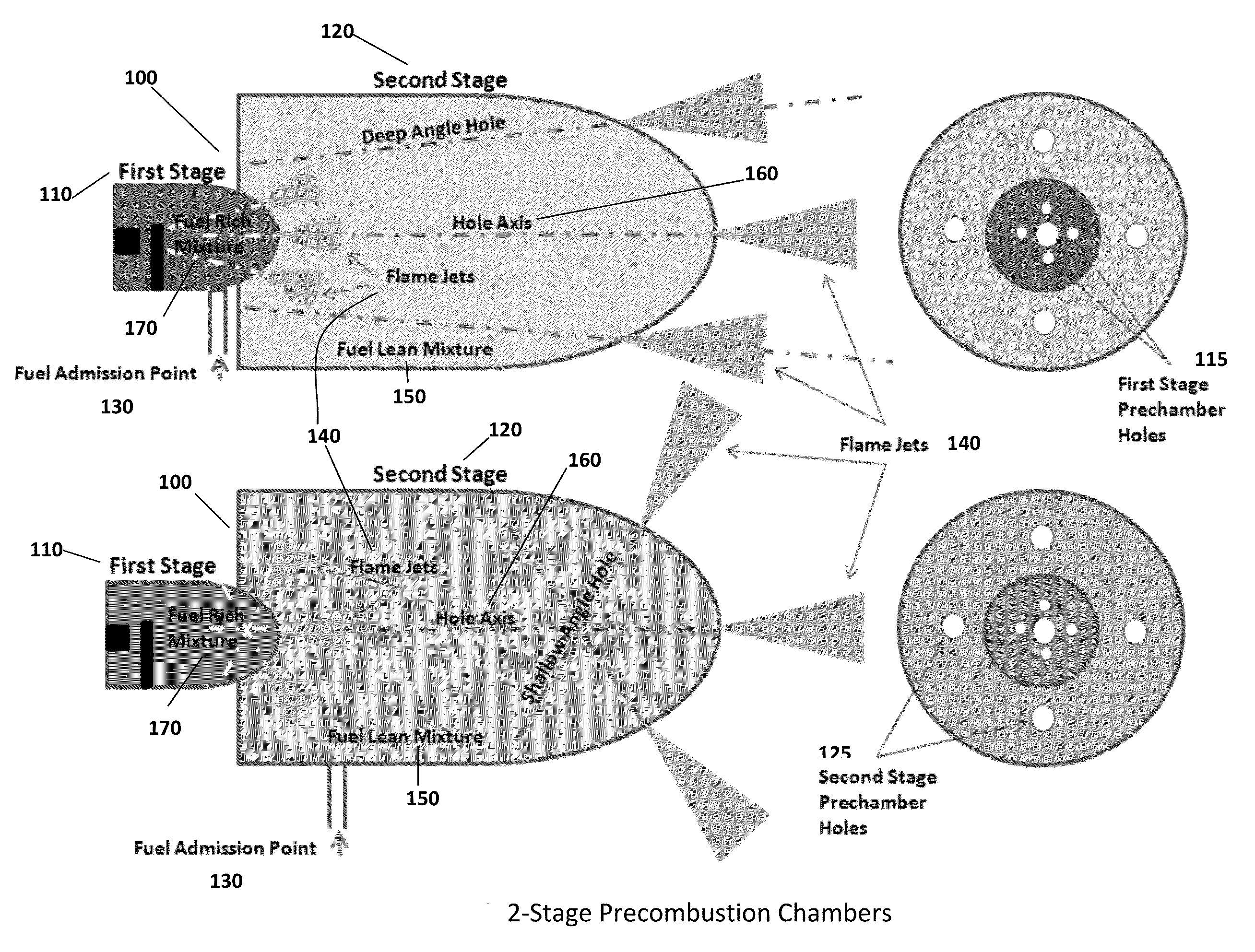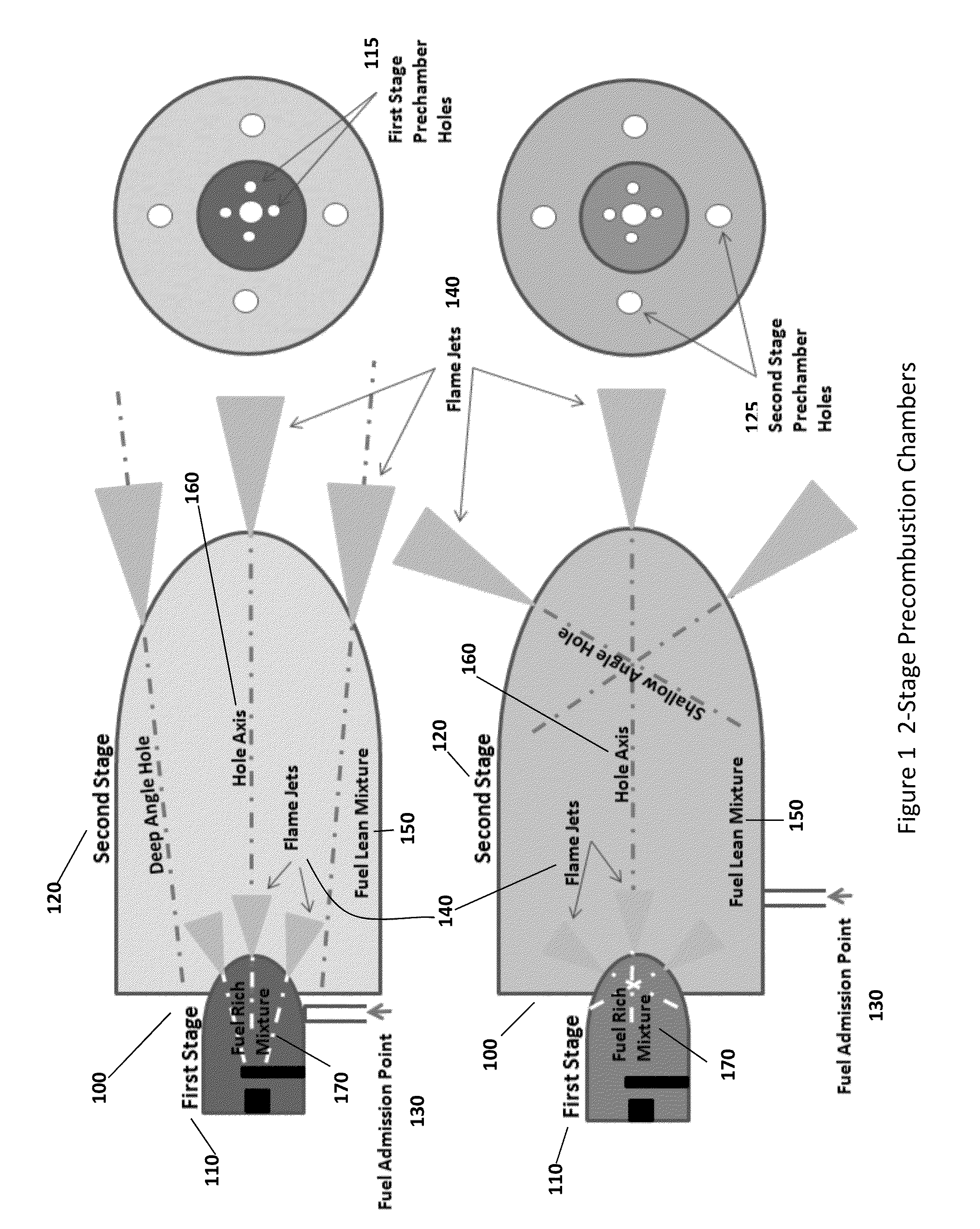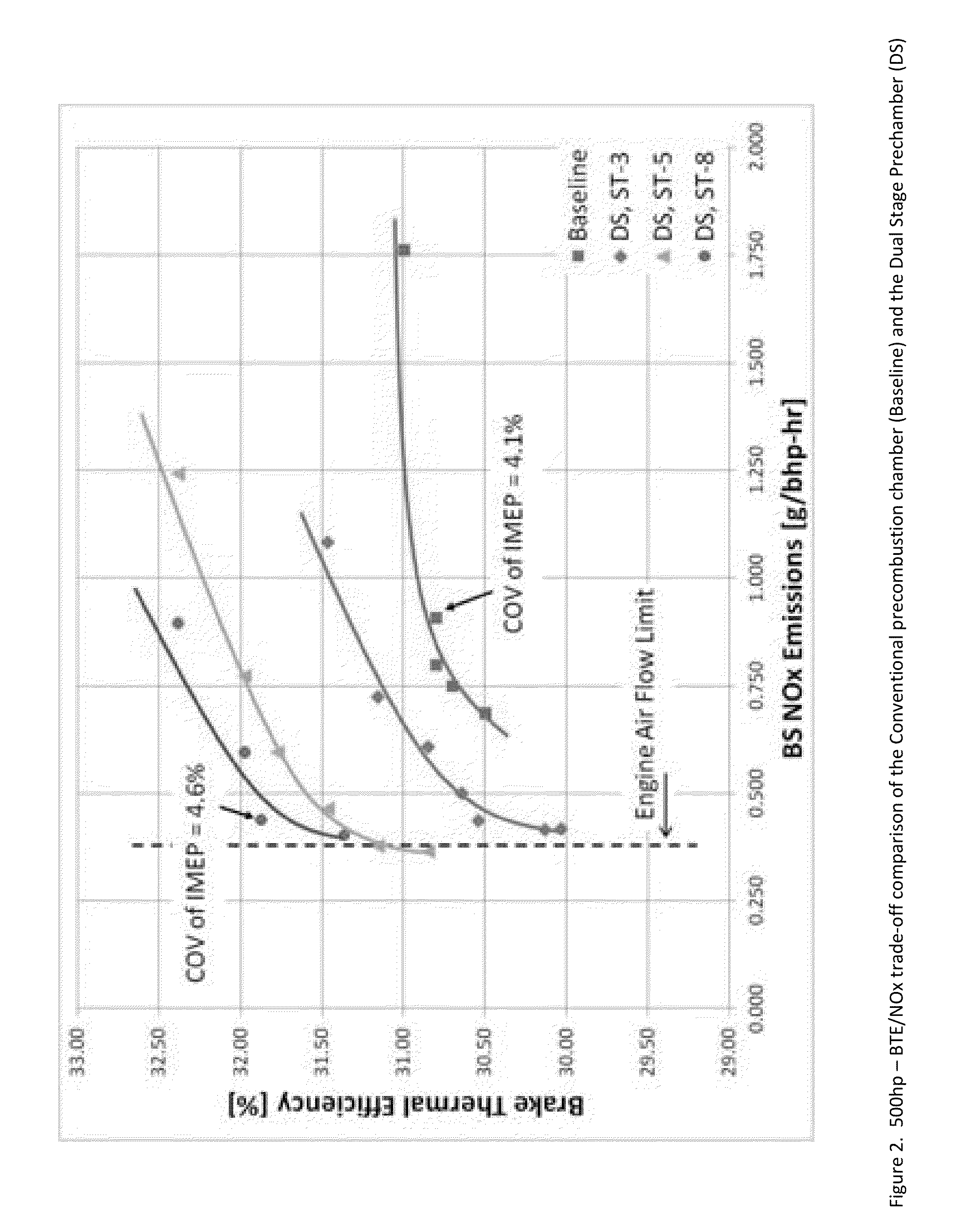Two-stage precombustion chamber for large bore gas engines
a gas engine and precombustion chamber technology, applied in combustion engines, spark plugs, electrical equipment, etc., can solve the problems of high nox in the prechamber of fuel rich engines, and achieve the effects of reducing nox levels in gas engines, preventing flame quenching, and promoting flame propagation speed
- Summary
- Abstract
- Description
- Claims
- Application Information
AI Technical Summary
Benefits of technology
Problems solved by technology
Method used
Image
Examples
Embodiment Construction
[0024]In certain embodiments, the two-stage precombustion chamber 100 concept disclosed herein, may be used to reduce engine NOx levels, with fueled precombustion chambers, while maintaining comparable engine power output and thermal efficiency.
[0025]Certain embodiments provide a method and a structure to achieve more effective combustion with leaner mixtures resulting in lower NOx. In certain embodiments as shown in FIG. 1, conventional precombustion chambers may be modified so that a first stage of combustion 110 occurs in a relatively small volume, with a relatively fuel rich mixture 170, and a second stage of combustion 120 occurs in a relatively larger volume with a relatively fuel lean mixture 150. In certain embodiments, a more efficient overall combustion characterized by low levels of NOx formation can be achieved by the two-stage precombustion chamber 100 system while generating very high energy flame jets 140 emerging from the second prechamber stage 120 into the main com...
PUM
 Login to View More
Login to View More Abstract
Description
Claims
Application Information
 Login to View More
Login to View More - R&D
- Intellectual Property
- Life Sciences
- Materials
- Tech Scout
- Unparalleled Data Quality
- Higher Quality Content
- 60% Fewer Hallucinations
Browse by: Latest US Patents, China's latest patents, Technical Efficacy Thesaurus, Application Domain, Technology Topic, Popular Technical Reports.
© 2025 PatSnap. All rights reserved.Legal|Privacy policy|Modern Slavery Act Transparency Statement|Sitemap|About US| Contact US: help@patsnap.com



